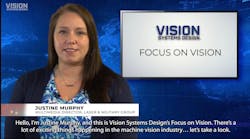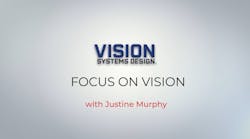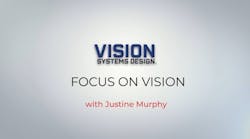It was a pleasure and honor to contribute an “On Vision” segment “way back” in the January 2022 edition of Vision Systems Design. With 2022 already mostly “in the can,” I feel that a review of the year in machine vision definitely is in order. There has been marketplace turmoil, overhyping of capabilities, technology advances, and corporate change enough to rouse even the most stoic industrial automation enthusiast, but let’s focus here on just a few key items.
Without mentioning specific M&A events, during 2022 some prominent companies in the industrial automation space solidified their position in machine vision technologies with key acquisitions. These included purchases of manufacturers of machine vision systems, lighting systems, cameras, sensors, and computer vision (deep learning/AI) companies. My favorite perennial prognostication in this industry is, “There’s going to be some market consolidation soon.” While M&A activity is interesting in the present, my observation over many years is that consolidation is ongoing, with vision companies emerging, growing, shrinking, shifting, or even disappearing. What does seem to be a constant is the one question always posited: “Will the new acquiring company actually make good use of the acquisition to create or enhance market share relative to the technology and continue to improve the offering?” My answer for 2022 is the same as all prior years: “We’ll have to wait and see.” Really, I do sincerely wish success for the M&A class of 2022.
On Vision: 2D or not 2D, That Is the Question
On Vision: What Will Drive Machine Vision Development?
On Vision: Vision Systems and Deep Learning: Are We Headed for Summer or Winter?
On Vision: Cutting Vision’s Cord
On Vision: Gage R & R Studies in Machine Vision
There was no shortage of hyperbole in the marketing of technology in 2022, but that is not new news. I think customers, though, are becoming cynical about or even immune to marketplace exaggerations. The problematic thing for me is that I truly embrace the idea of making machine vision, robotics, and other technologies easier to use, and I am concerned that a customer base that experiences an inability of technology to deliver on an excessive claim will begin to ignore the very viable use cases for that technology. This is prominently true in deep learning technology for automated inspection. Many end users are getting real value from deep learning in their inspection applications by judicially selecting appropriate applications, implementing competent image acquisition, and fielding a team with the experience to execute the deployment or implementation properly and effectively. On the other hand, end users who are trying to rely on deep learning only to conquer the “impossible” tasks that “old-fashioned machine vision just can’t succeed at” often end up on a very difficult path. Bottom line: As always in machine vision or robotic integration, analyze the application with realistic expectations of the technology’s capabilities.
To be sure, there were many technological advances in 2022. Sensors and the cameras that support them became faster, offered higher resolutions, and featured higher-speed interfaces. To that point, interfaces like CoaxPress 2.0 and CameraLink HS have become widely implemented, and cameras that can use 100GigE connectivity are challenging the status quo. I noted a strong growth in SWIR camera offerings with some advancements in resolution and sensor efficiency. Not to be outdone, lens and illumination component manufacturers also delivered new products to support both the extended wavelengths used in non-visible imaging and to help further enable advanced imaging techniques like computational imaging. I would add, though, that general-purpose technologies that have served the industry for years still are the most well-indicated for most applications. Embrace standard components where possible to avoid over-specifying and making a project more complex than necessary.
Finally, a word about the future, or more accurately a word of advice: The future moves more slowly than we may want it to. Many predictions about future growth and technological advances are simply unsupportable and worse are misleading. Change will absolutely come, however it’s never at the speed the company hoped for or promised to its investors. For me, I hope that 2023 brings continued growth in the machine vision, robotics, and general industrial automation markets. I’m looking forward to an easing of the supply chain problems that have plagued the industry for the past 18 to 24 months so systems integrators and end users can continue to advance vision and robotics implementation. Most of all, I wish for a prosperous and joyful 2023 for all of you. Happy New Year!





